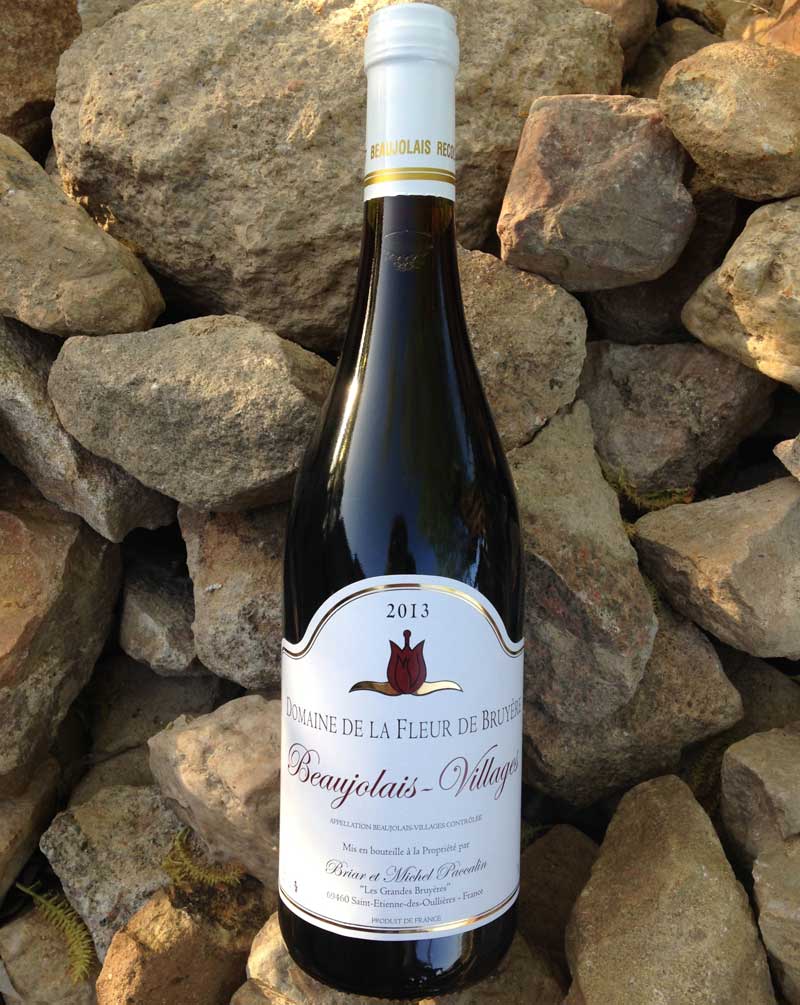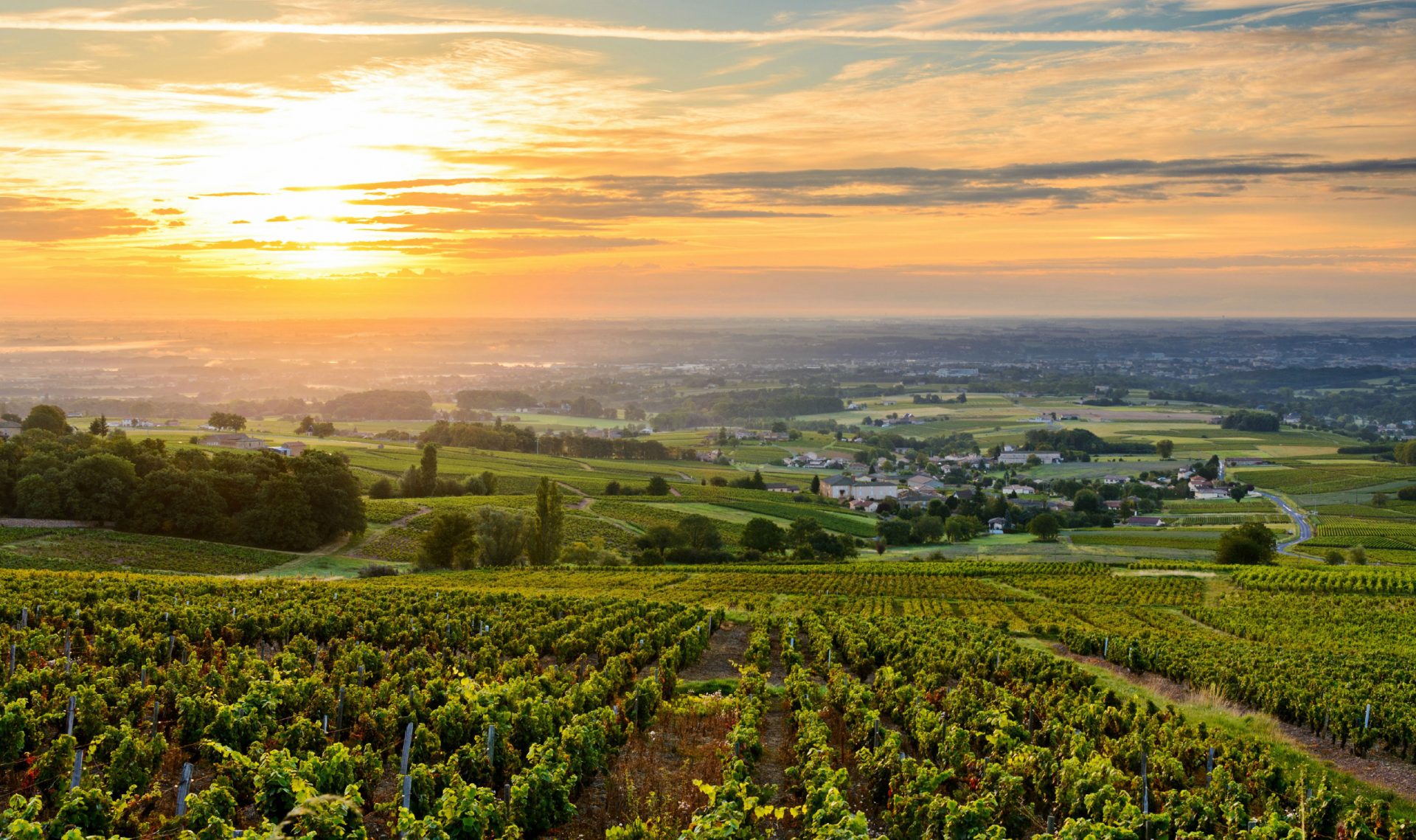The Beaujolais Region
The Beaujolais is a historical province and a wine-producing region in central eastern France, located north of Lyon and south of Macon and covering parts of the north of the Rhône department (Rhône-Alpes) and parts of the south of the Saône-et-Loire department (Burgundy). Administratively the Beaujolais is in Rhone but as a wine region parts of it fall under Burgundy in Saone and Loire.A Little History
The Romans planted the first vineyards in the Beaujolais around Mount Brouilly. In the late 14thC, when the Duke of Burgundy decided to focus on planting the Pinot Noir grape variety, the Beaujolais in the south opted to plant only Gamay vines for its wine production. The Gamay grape variety, being hardier, ripening earlier and producing a stronger more fruity wine than Pinot Noir, hence creating a distinctive difference between the two regions. Today, 98% of the Beaujolais is planted with Gamay, the rest being mainly planted with Chardonnay for the production of still and sparkling white wines.Geographically
The Beaujolais region is made up of 55,000 acres, 55km long and 14km wide, the Nizerand River at the level of the town of Villefranche-sur-Saone passing across the centre. The northern hills and valleys, known as the ‘Haut Beaujolais’ have predominantly granite and schist rich soil with some limestone and clay, where the thirty-nine villages of ‘Beaujolais-Villages’ and the ten ‘Crus’ areas produce the more complex full-bodied Beaujolais wines. South of the river, where the land is flatter lying, known as the ‘Bas Beaujolais’, the soil consists mainly of sandstone and clay with some limestone, producing lighter more fruity wines known as ‘Beaujolais’ and ‘Beaujolais Nouveau’. Soil type is key in determining the deeper characteristics of a wine. In 2017 the Beaujolais region was registered as a Geo Park, due to the interest of its rich physical geography, and is presently in the process of becoming registered as a UNESCO Geo Park.
The Climate
The climate is semi-continental, influenced from the south by the Mediterranean Sea. The region is warmer than Burgundy in summer, with temperatures averaging 22-30C, the grapes fully ripening by the end of August or early September for harvest. Winters are generally crisp, bright and dry, and can dip well below zero, with the occasional fog floating up from the Saone valley. Spring and autumn seasons have cool evenings but generally pleasantly warm sunny days of up to 25C, with the possibility of a mid season frost in late October or March, and less frequently in April.The Different Wines
Beaujolais wines from the south are considered to be generally light and fruity with a floral aroma, making it easy to drink as an aperitif or accompanying a summer meal – these are known simply as ‘Beaujolais’. Some producers opt for also producing a Beaujolais Nouveau, which is precocious wine, extra light with a short maturation period, which comes on to the market at midnight on the third Thursday in November, to be drunk during the closing months of the year. The wines produced just north of the centre are known as ‘Beaujolais Villages’ and come from 39 villages and their surrounding areas. These wines are more complex than a ‘Beaujolais’ and can have a much deeper colour and flavour, most notably those of red and black fruits and berries with more subtle mineral notes, a wine that most typically develops over a three year period. The vineyard at Chez Briar and Michel is situated in the Beaujolais Villages area and neighbours with Brouilly. The 10 Crus are situated in the most northern part of the Beaujolais - each produced in a village or area which has its own wine characteristics and produces a wine that carries that name - Brouilly, Côte de Brouilly, Régnié, Morgon, Chiroubles, Chenas, Fleurie, Moulin-à-Vent, Juliènas, Saint-Amour. These wines are the most complex of the Beaujolais region and generally contain more tannins which gives them a longer maturation period of around five years in which to develop depth and a broader array of rich flavours and aromas.The Vineyards
The Beaujolais region is also renowned for its natural beauty, the views from Chez Briar and Michel rather resembling those of Tuscany but on a smaller scale. The vineyards are situated among rolling hills and valleys that are dotted with pretty villages, all beautifully manicured. The Beaujolais region is absolutely perfect for those who love to hike or cycle, as there are endless miles of easy to tread paths without boundaries, offering breathtaking views at every turn.


